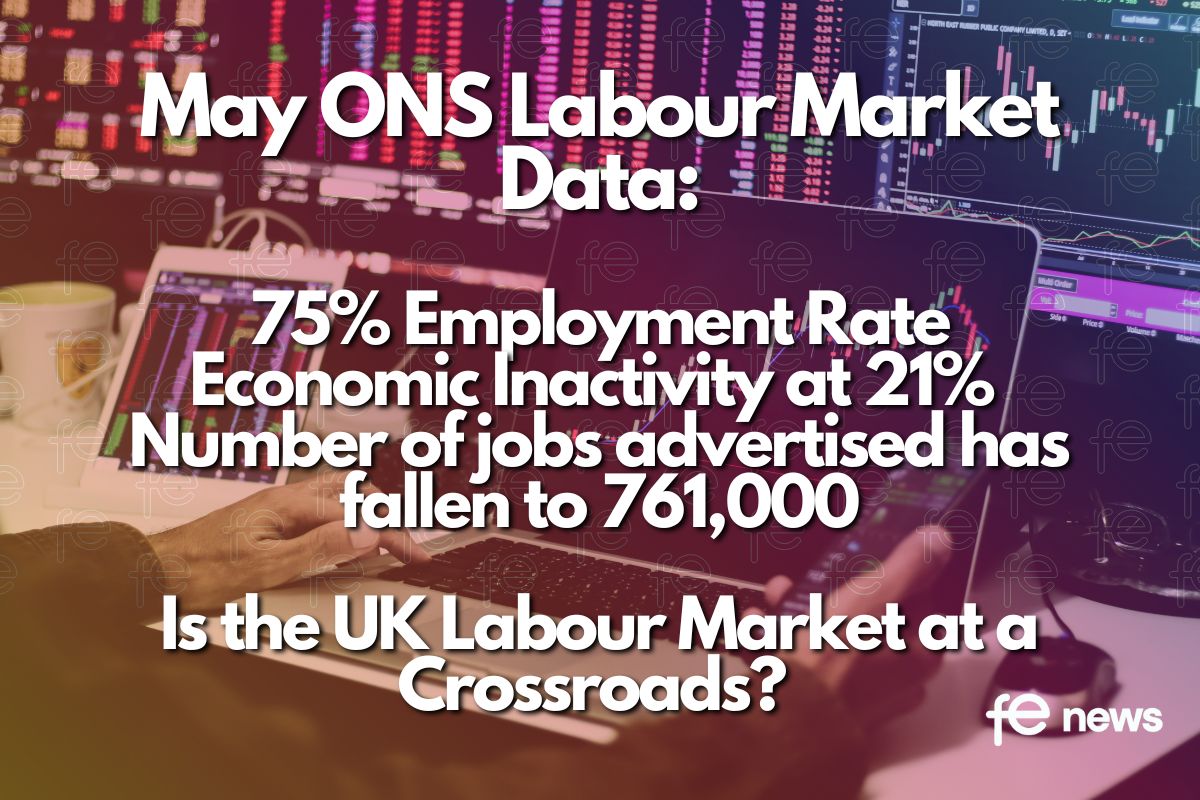National Mental Health Day: Sector Response

National Mental Health Day (10th October) is a great opportunity to reflect on mental health issues around the world, and specifically on how organisations can support their employees’ and students’ mental health and wellbeing.
Sector Response
Naveed Malik, Regional Director EMEA, monday.com:
“Nurturing mental health is essential to improve collaboration and build stronger teams. Though one in 5 UK employees report taking time off work for mental health reasons, nearly two-thirds of them chose not to disclose this to their manager. There is an urgent need for open discussion and improved mental health measures in the workplace. However, this can be challenging to implement considering the “grin and bear it” culture ingrained into the UK workforce.
National Mental Health Day is a reminder that organisations need to create a space for vulnerability and be accessible, which means that, as a leader, it is your responsibility to respond well in the moments when your employees need you most, no matter what their individual situation is, as a priority to enhance employee wellbeing. Over the long term, leaders should look to establish a workplace culture that fosters open dialogue and prioritises employee well-being. This is even more important amidst the cost-of-living crisis and enduring economic uncertainty.
It is a leader’s responsibility to respond to employees’ needs, which brings its own challenges navigating many complex and sometimes delicate matters. This could mean offering guidance, arming individuals with the appropriate resources, helping automate mundane tasks to free time for more creative ones, or simply lending an ear.
Putting mental health at the forefront of decision-making will allow companies the opportunity to create a welcoming and inspiring culture that helps people nurture and maintain a healthy work-life balance. Strong mental health priorities and effective management go hand in hand. For companies to succeed during this time, leaders must continue to find ways to address mental health to enable high levels of employee satisfaction and productivity.”
Chris Baker, Managing Director EMEA of Anaplan:
“Just as the pandemic stimulated discussions about better ways to work, it has also triggered reflections on mental health in the workplace. According to the World Health Organization, rates of anxiety and depression increased by a staggering 25% in the first year of the pandemic alone.
While some thrived in the hybrid environment, others struggled to balance new expectations. Organisations need to integrate the learnings of the past years by taking a holistic approach to both mental and physical health at work. The most important learning here is to respect difference what works for one person may not work for another, so the goal is building a culture that can accommodate individual preferences of everyone in the community.
This can be achieved through open and vulnerable leadership – one that is empatheticand authentic to the needs oftheir workforce, no matter what they are going through. Leaders need to foster connection through initiatives like well-being days and help employees to adjust to a new life situation, whether it be a bereavement, marriage, or health issues. Businesses should also train managers to spot signs of exhaustion, mood changes, stress, or anxiety so that they can respond accordingly.
Returning to the workplace after the pandemic – which started important conversations on diversity and inclusion – also offers a chance to re-establish good and reject negative patterns. A strong company culture empowers people to hold themselves and each other accountable and it does not tolerate microagressions or abrasive behaviour.
It’s important to recognise that DEI is synonymous with mental health, as exclusion can negatively impact people’s well-being. Ensuring that the workplace provides a sense of belonging for all is essential. Diversity should be the guiding principle behind every team’s setup, with managers creating an environment that accommodates introverts, extroverts, detail addicts, blue-sky thinkers and the neurodiverse too.
Teams are strongest when its members are empowered to be themselves. Facilitating Employee Resource Groups (ERGs) is a good step in this process, allowing businesses to support communities within their workforce while boosting awareness of intersectionality.”
Juliane Sterzl, SVP EMEA, CoachHub
“The estimated cost of depression and anxiety to the global economy is $1tn per year in lost productivity, meaning that a lack of mental health support in the workplace not only impacts workplace culture and productivity, but also has a specific, measured, economic impact.
HR leaders therefore not only need to focus on supporting employee wellbeing, but also on offering dedicated development programmes to managers and executives in understanding and accommodating mental health concerns.
These programmes are most effective when they can be tailored to the individual. Employees will always have a range of needs depending on their job role and personal circumstances; what works for one person may not necessarily work for another. A tailored strategy to meet individual needs is the gold standard and employers who do this will be the ones employees want to work for – a win/win outcome.”
Sarah Mian, Head of Learning Content, Access Learning
“Caught up in the chaos of the day to day, it can sometimes be difficult for managers to recognise situations where someone more specialised should step in. It’s also up to managers to ensure they are creating a transparent and open environment wherein they feel comfortable discussing personal issues or stresses.
This goes beyond the policy handbook, but to a lived, ingrained, and driven culture of empathetic leadership, personalised. Ensure that ‘human’ is always being in incorporated in your HR policies. This includes training for managers on how to spot the signs of poor mental health, such as staff feeling overwhelmed by their workload, a change in attitude, or a lack of motivation.
Within these training initiatives, organisations can consider offering learning and development centred around specific conditions. For example, Access Learning has recently worked with charity Bipolar UK on designing an accessible eLearning module to increase the understanding of bipolar disorder, in the hopes of creating more inclusive environments within workplaces.”
Sara Holmberg, Head of HR at Winningtemp –
“After the pandemic, as the Great Resignation illustrated, employees across the world are now re-evaluating their career choices and their relationship with work. We are also currently experiencing a cost-of-living crisis and most likely headed for a recession, so there is understandably a sense of unease that exists within the workforce. Hence to prevent employees from quitting due to occupational burnout, it becomes all the more important for organisations to ensure that they encourage better work-life balance among their employees rather than forcing them to work longer hours. This requires regular, open, and honest conversations between managers and their employees, to best understand how the workforce is faring.
To boost employee productivity and to create high-functioning teams, HR leaders now need to focus on planning and creating a work environment that encourages collaboration, compassion, clarity and inspiration. This involves revamping your talent management strategy by taking an honest look at workloads and resources so as to prevent employees from being overextended to accomplish multiple tasks that are potentially unnecessary or cannot possibly be done well.”
Kelly Metcalf, Head of Diversity, Inclusion and Wellbeing at Fujitsu:
“Previously when it came to mental health and wellbeing, far too many organisations offered piecemeal gestures along such as meditation classes or ad hoc early finishes. Whilst no-one would have wished for a global pandemic, one positive outcome has been the way in which it propelled employee wellbeing to the top of the boardroom agenda, forcing companies to act swiftly and accordingly to support their people. At the height of the pandemic, Fujitsu found that top-of-mind for UK leaders was employee mental health, with 90% of leaders stating it as a priority.
“Now, organisations need to revaluate their offerings and work out how they can fundamentally sustain employee wellbeing in the long run, thus avoiding burnout for their staff. This is especially true during times of uncertainty and worry with the cost-of-living crisis. While many companies have embraced new hybrid ways of working, organisations now have an imperative to embed wellbeing more formally into their working policy and culture. A fundamental part of that means driving effective and bespoke policies – especially those that suit a working model where employees are less visible on a day-to-day basis. This is about ensuring leaders are genuinely committed to understanding, and taking action on, the factors that affect the wellbeing of their people. It is about creating an open culture for wellbeing and keeping a regular dialogue going with all employees. This is essential not only to retain people but to ensure you are able to attract the widest pool of talent. McKinsey shows that support for employee health and wellbeing is an important factor for people in deciding where to work and whether they will stay with their employer.
“This can become a reality if business and HR leaders couple insight from their people with data relating to the impact of their wellbeing practices. While D&I measurement has become more commonplace in companies, wellbeing measurement is certainly lacking. That’s something all businesses should be looking to address as a matter of urgency, not least to help attract and retain talent at a time of global skills shortages. To help with this, National Forum for Workplace Health & Wellbeing, of which I am part, has recently published some great practical guidance on how to measure wellbeing at work.”











Responses